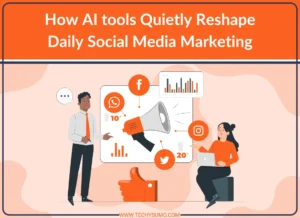Artificial intelligence is no longer a futuristic buzzword—it’s the engine driving innovation, efficiency, and competitiveness across every industry. But as companies rush to adopt AI, one question stands above the rest: Is your business truly AI ready? Being “AI ready” means more than just plugging in a chatbot or experimenting with automation. It’s about building the right data foundation, integrating AI seamlessly into workflows, and empowering teams to make smarter, faster decisions.
Table of Contents
Why AI Readiness Matters
By 2025, businesses that lack an AI-ready infrastructure will struggle to keep up with competitors who have already unlocked the power of automation and intelligent analytics. According to industry research, organizations with AI-ready data and processes experience up to 40% higher productivity and 35% better customer retention. The difference is clear: AI readiness is now a core driver of growth, resilience, and market leadership.
The Three Pillars of AI Readiness
1. Unified Cloud Data Management
The first step in becoming AI ready is consolidating fragmented data into a Single Source of Truth (SSOT). Most companies operate with data scattered across CRMs, ERPs, marketing platforms, and spreadsheets, leading to inefficiencies and unreliable insights. AI can only deliver value when it has access to accurate, up-to-date, and standardized information.
Platforms like Boost.space solve this by centralizing and synchronizing data from 2,000+ tools, eliminating silos and ensuring every department works from the same reliable dataset. This foundation is essential for real-time analytics, automation, and trustworthy AI outputs.
2. Seamless AI Integration
Even with quality data, AI must be woven into your actual business processes—not just bolted on as an afterthought. Seamless integration means connecting enterprise apps with leading AI models (like GPT, Claude, Gemini, and Mistral) without the need for coding or manual data transfer.
With real-time, plug-and-play integration, AI can analyze live data, automate decisions, and trigger actions across sales, marketing, customer service, and operations. This approach turns AI from a siloed experiment into a true business accelerator.
3. Built-In AI Features for Everyday Work
AI readiness isn’t just about infrastructure—it’s about usability. The most effective organizations deploy AI-powered features directly within their business tools, making intelligent automation accessible to every team. Examples include:
– AI data enrichment for cleaner, more complete records
– Predictive analytics for sales, finance, and operations
– AI writing assistants trained on your business data for better content and communication
– Anomaly detection to spot errors and risks before they become problems
With these built-in capabilities, AI becomes a practical, everyday asset—not just a theoretical advantage.
How to Become AI Ready: Practical Steps

- Audit your data: Identify all sources, gaps, and inconsistencies.
- Centralize and structure: Use a platform that supports SSOT and real-time synchronization.
- Integrate AI into workflows: Connect your core tools to AI models and automate routine decisions.
- Empower your teams: Provide training and access to AI features that enhance daily work.
The Future Belongs to AI-Ready Organizations
By the end of 2025, the gap between AI-ready businesses and the rest will be wider than ever. Those who invest now in unified data, seamless integration, and practical AI features will lead their industries—while others risk becoming digital relics.
Are you ready to future-proof your business?
Organizations that invest in AI readiness are also better positioned to capitalize on emerging trends such as generative AI, advanced automation, and predictive analytics. As large language models (LLMs) and machine learning algorithms become more sophisticated, the need for high-quality, unified data becomes even more critical. Without a robust data foundation, even the most advanced AI tools will struggle to deliver meaningful results or scale across the enterprise.
Moreover, AI readiness is not a one-time project—it’s an ongoing journey. Businesses must continuously assess their data infrastructure, update integration pipelines, and refine their AI-driven workflows to stay ahead of technological advancements and shifting market demands. This iterative approach ensures that organizations remain agile and can quickly adapt to new opportunities, whether it’s launching a new product, entering a new market, or responding to competitive threats.
Another key advantage of being AI ready is the ability to foster a culture of innovation within the organization. When teams have access to clean, real-time data and AI-powered tools, they are empowered to experiment, iterate, and implement creative solutions to complex problems. This culture of experimentation not only drives operational efficiency but also attracts top talent who want to work at the cutting edge of technology.
Finally, regulatory compliance and data governance are becoming increasingly important as AI adoption grows. Companies that have already established centralized, structured data systems and transparent AI workflows will find it much easier to meet evolving legal and ethical standards. This proactive stance not only reduces risk but also builds trust with customers, partners, and stakeholders.
In summary, being AI ready is about more than technology—it’s about building a resilient, future-proof business that can thrive in a world where artificial intelligence is the norm. To learn more about practical steps and strategies for AI readiness, visit the AI readiness guide on Boost.space’s blog and start your journey toward smarter, more agile operations today.






